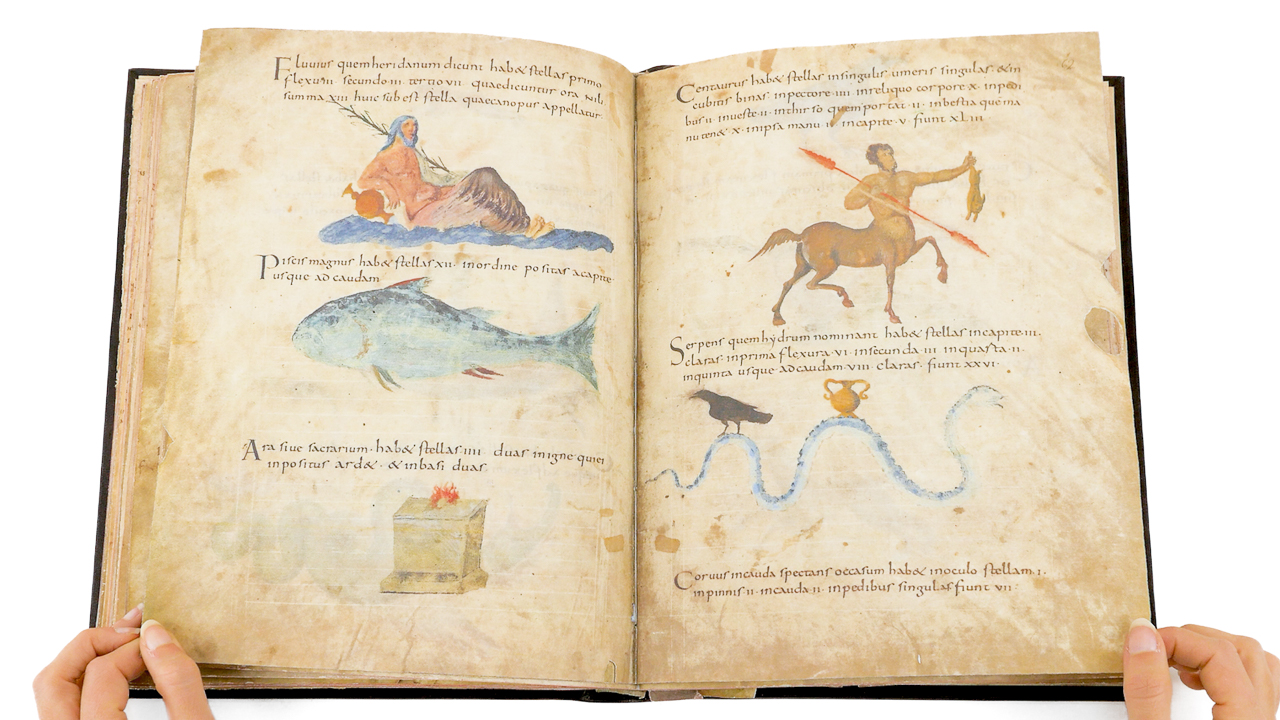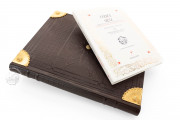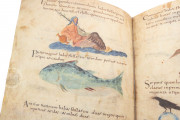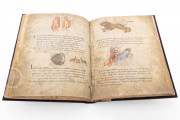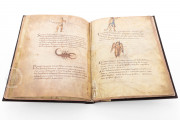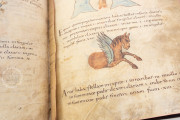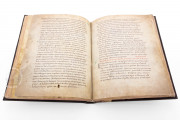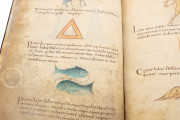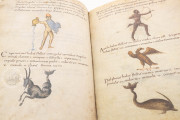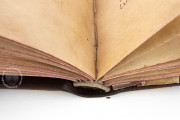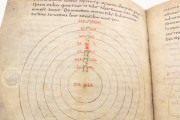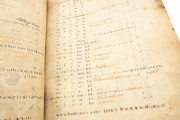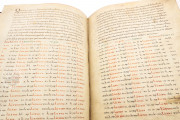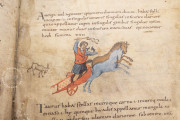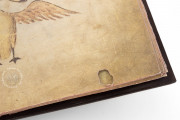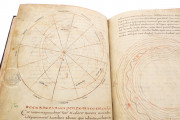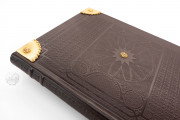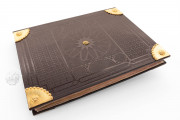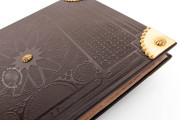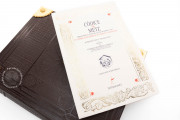The Metz Codex is a miscellany of texts on astronomy, with a focus on computus—the calculation of the movement of astronomical bodies and the dates of movable Christian holy days each year—to which has been added a fragment of a leaf from an early Spanish Bible (fol. 77). The astronomical manual was created in Metz in the 820s for Drogo (801-855), Bishop of Metz, perhaps upon his elevation to the bishopric in 828. It is a deluxe manuscript with forty-two illusionistic paintings of the highest quality depicting the people, animals, and objects that gave their names to the constellations.
The codex is a record of the legacy of the promotion of learning initiated by Charlemagne at his court at Aachen and demonstrates the medieval engagement with ancient knowledge in the service of the Christian Church.
Carolingian Charts and Constellations
The text of the Metz Codex comes from the renowned "Handbook of 809-812," of which numerous copies were made in the early ninth century. Although only four of the handbook's seven books are preserved in the Metz Codex, the manuscript nevertheless provides the best textual record of the handbook.
The Celestial Bodies Incarnate
The manuscript constitutes one of the first of many illuminated books—including the Drogo Sacramentary—associated with Drogo, who often engaged itinerant specialists to work for him in Metz. Bringing the words of the scientific manual to life, the miniatures of the Metz Codex are inspired by classical representations but reinterpret their sources in notable ways.
There is no indication of the placement of the stars, and the miniatures seem to be representations less of the constellations than of their namesakes. Yet the constellations are painted on bare parchment without frames making them seem to float, if not in the sky, then on the page.
An Early Witness of Caroline Minuscule
The main text is written in an early version of Caroline Minuscule found also in other manuscripts copied at Metz. The many charts and the chapter headings feature writing in colored inks (red and green), much in Rustic Capitals or Uncial, two scripts of late Roman antiquity beloved for use in display scripts in the Carolingian period.
Drogo's Copy of the Handbook
The manuscript's charts and texts were updated for decades: at Metz, and then at the Benedictine monastery at Prüm, and in Liège (in 922). In 1543, a certain Franciscus Monachi of Sicily accepted the book as a gift. Juan Francisco Pacheco Téllez-Girón (1649-1718), Duke of Uceda and Viceroy of Spanish Sicily, confiscated the book and had it rebound. After Téllez-Girón returned to Spain in 1697, his library was confiscated in 1711 by soldiers of Philip V (1683-1746), King of Spain. Following a brief sojourn in the Real Biblioteca, the Metz Codex was accessioned into the Biblioteca Nacional.
We have 1 facsimile edition of the manuscript "Metz Codex": Códice de Metz facsimile edition, published by Testimonio Compañía Editorial, 1993
Request Info / Price
